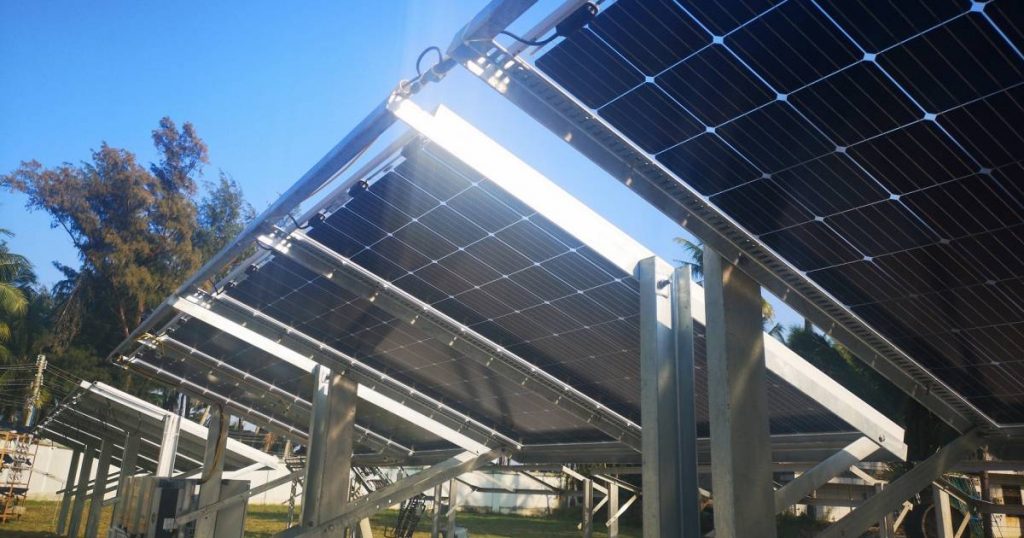
Image: Longi Solar
Overseas manufacturers of bifacial solar panels will be rejoicing after an announcement from the U.S. Trade Representative that these modules will be excluded from the “Trump solar tariff”.
In January last year, U.S. President Donald Trump implemented punitive tariffs of as much as 30 percent on imported solar cells and panels. SQ’s Ronald commented at the time the “Trump solar tariff” was evil, but not as evil as it could have been.
The tariffs had a significant impact on a number of manufacturers, including SunPower. While SunPower has its headquarters in the USA, its manufacturing capacity at the time was in Malaysia, the Philippines, Mexico and China.
The Office of the United States Trade Representative (USTR) then kicked off a process of considering applications to exclude certain products from the tariffs – and solar panel manufacturers lined up. In the first round of exclusions, SunPower was granted a reprieve, but there was little joy for others.
Bifacial Solar Panels To Be Exempted
A second and what is believed to be a final round of exclusions is about to come into play. A document from the U.S Trade Representative scheduled to be published in the Federal Register on Thursday (local time) indicates the following exclusions:
15) bifacial solar panels that absorb light and generate electricity on each side of the panel and that consist of only bifacial solar cells that absorb light and generate electricity on each side of the cells;
(16) flexible fiberglass solar panels without glass components other than fiberglass, such panels having power outputs ranging from 250 to 900 watts;
(17) solar panels consisting of solar cells arranged in rows that are laminated in the panel and that are separated by more than 10 mm, with an optical film spanning the gaps between all rows that is designed to direct sunlight onto the solar cells, and not including panels that lack said optical film or only have a white or other backing layer that absorbs or scatters sunlight
Bifacial solar panels being granted an exemption will be welcomed by companies including Longi Solar. Longi recently grabbed headlines when it announced its 72-cell bifacial half-cut monocrystalline PERC module had exceeded 450W power output – just on the front side. Back in February, the company announced it would be supplying 224MW of its bifacial PERC modules for a solar farm in Georgia. That project might not have dodged the tariffs as it may already be under construction – unless panel deliveries have been held off in anticipation of the exemption.
BloombergNEF solar analyst Hugh Bromley expects the USA’s utility-scale solar sector “to pivot almost 100% to bifacial products”. Bloomberg notes bifacial panels accounted for just 3% of the total solar market last year. Whether that was just in relation to the USA wasn’t clear.
The Solar Energy Industries Association (SEIA) applauded the news:
“This is a significant step for jobs, the economy and clean energy, and will help significantly accelerate the adoption of bifacial solar in the U.S,” it said.
On a related note, discover why Ronald thinks bifacial modules could also become popular for Australian solar farms.

 RSS - Posts
RSS - Posts



Speak Your Mind